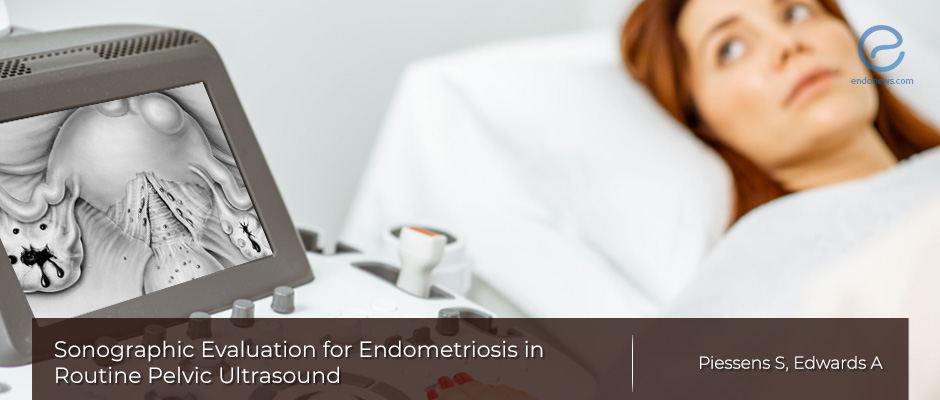A Routine Pelvic Ultrasound Examination Should Include an Evaluation for Endometriosis
Apr 20, 2020
Women may be diagnosed appropriately before being operated, and surgeons can better prepare for a single well-planned procedure.
Key Points
Highlights:
- Deep infiltrating endometriosis may be diagnosed during a routine pelvic ultrasound examination.
Importance:
- The video article shows that routine ultrasound examination can be extended beyond the uterus and ovaries to look for deep infiltrating endometriotic nodules, thereby trying to diagnosing women with deep infiltrating endometriosis before surgery.
What's done here:
- Physicians from Australia produced a narrated video article detailing a dynamic ultrasound approach to diagnose endometriosis.
Key results:
- In the video, the doctors show how a routine ultrasound examination can be extended beyond the uterus and ovaries into the posterior and anterior pelvic compartments.
Limitations:
- The approach requires advanced skills.
Lay Summary
Routine pelvic ultrasound examination should be extended beyond the uterus and ovaries into the posterior and anterior pelvic compartments, according to Australian doctors.
With such examinations, deep infiltrating endometriosis nodules can be searched, say the authors, allowing women to be diagnosed before surgery. This way, a well-prepared team of surgeons can perform a single operation to treat patients.
In order to show how the evaluation for endometriosis can be included in a routine pelvic ultrasound examination, Drs. Sophie Piessens and Andrew Edwards from City Imaging Ultrasound for Women in Melbourne, Australia published a narrated video article in "The Journal of Minimally Invasive Gynecology". In the video, the doctors describe a four-step dynamic ultrasound approach.
Normally, endometriosis is diagnosed with laparoscopic surgery, and any nodules are removed during the same operation. However, this means that surgeons are not well prepared and do not know what they will be faced with until they are already operating the patient. It is particularly complicated to remote deep infiltrating endometriosis and according to Drs. Piessens and Edwards, it “usually cannot be completed unless it was diagnosed preoperatively”.
Another way to diagnose deep infiltrating endometriosis is by transvaginal ultrasound where an ultrasound probe is inserted into the vagina to examine the reproductive organs. This is normally used to assess women with gynecological symptoms such as bleeding between periods and pelvic pain.
According to the authors of the present study, if endometriosis is assessed in a routine pelvic ultrasound, women with deep infiltrating endometriosis may be diagnosed earlier and their surgery may yield better patient management.
Research Source: https://www.ncbi.nlm.nih.gov/pubmed/31493569/
deep infiltrating endometriosis diagnosis pelvic ultrasound

